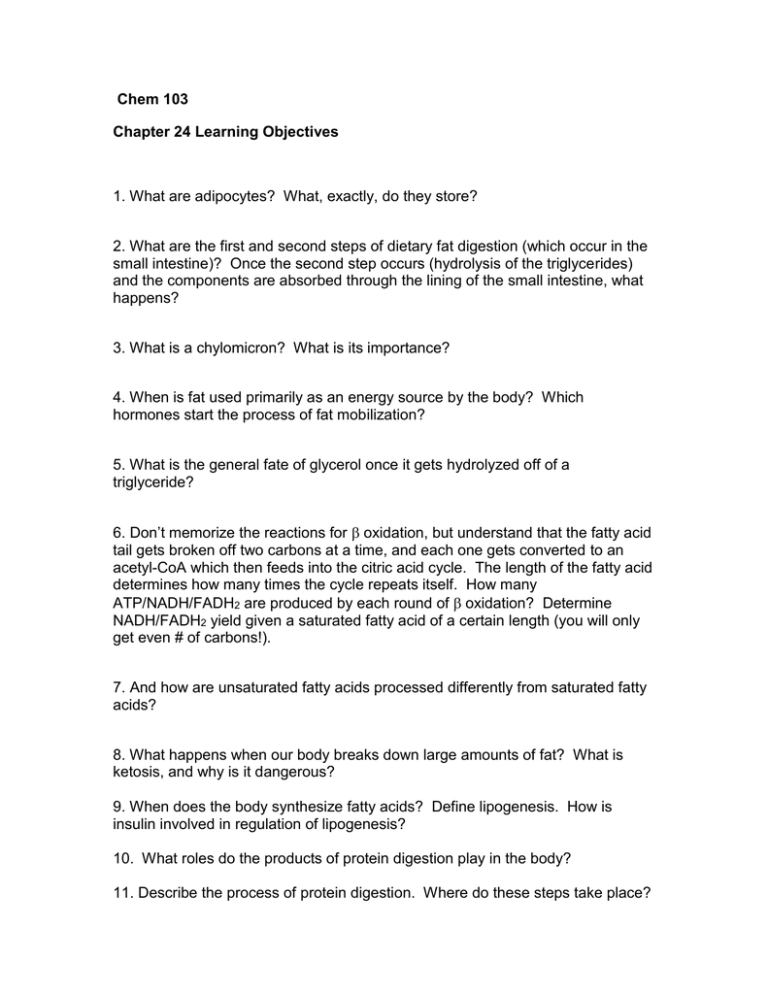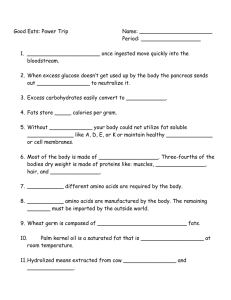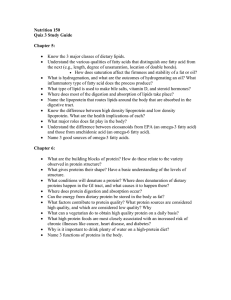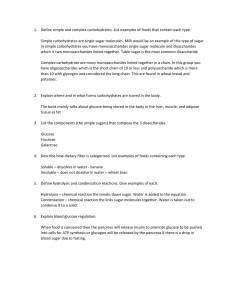Chem 103
advertisement

Chem 103 Chapter 24 Learning Objectives 1. What are adipocytes? What, exactly, do they store? 2. What are the first and second steps of dietary fat digestion (which occur in the small intestine)? Once the second step occurs (hydrolysis of the triglycerides) and the components are absorbed through the lining of the small intestine, what happens? 3. What is a chylomicron? What is its importance? 4. When is fat used primarily as an energy source by the body? Which hormones start the process of fat mobilization? 5. What is the general fate of glycerol once it gets hydrolyzed off of a triglyceride? 6. Don’t memorize the reactions for oxidation, but understand that the fatty acid tail gets broken off two carbons at a time, and each one gets converted to an acetyl-CoA which then feeds into the citric acid cycle. The length of the fatty acid determines how many times the cycle repeats itself. How many ATP/NADH/FADH2 are produced by each round of oxidation? Determine NADH/FADH2 yield given a saturated fatty acid of a certain length (you will only get even # of carbons!). 7. And how are unsaturated fatty acids processed differently from saturated fatty acids? 8. What happens when our body breaks down large amounts of fat? What is ketosis, and why is it dangerous? 9. When does the body synthesize fatty acids? Define lipogenesis. How is insulin involved in regulation of lipogenesis? 10. What roles do the products of protein digestion play in the body? 11. Describe the process of protein digestion. Where do these steps take place? 12. What is protein turnover? Why else might a protein get replaced? 13. What is urea, and what is its role in the body? 14. Does our body obtain energy from proteins? Is this its “favorite” energy source? What might happen as a result of long-term starvation? 15. Describe the general process of amino acid degradation. Where does this take place? Account for the fate of the different pieces of the amino acid. 16. Why id the urea cycle necessary? What does the urea cycle do? Where, in the body, does the urea cycle take place? 17. What is the difference between essential and nonessential amino acids?











